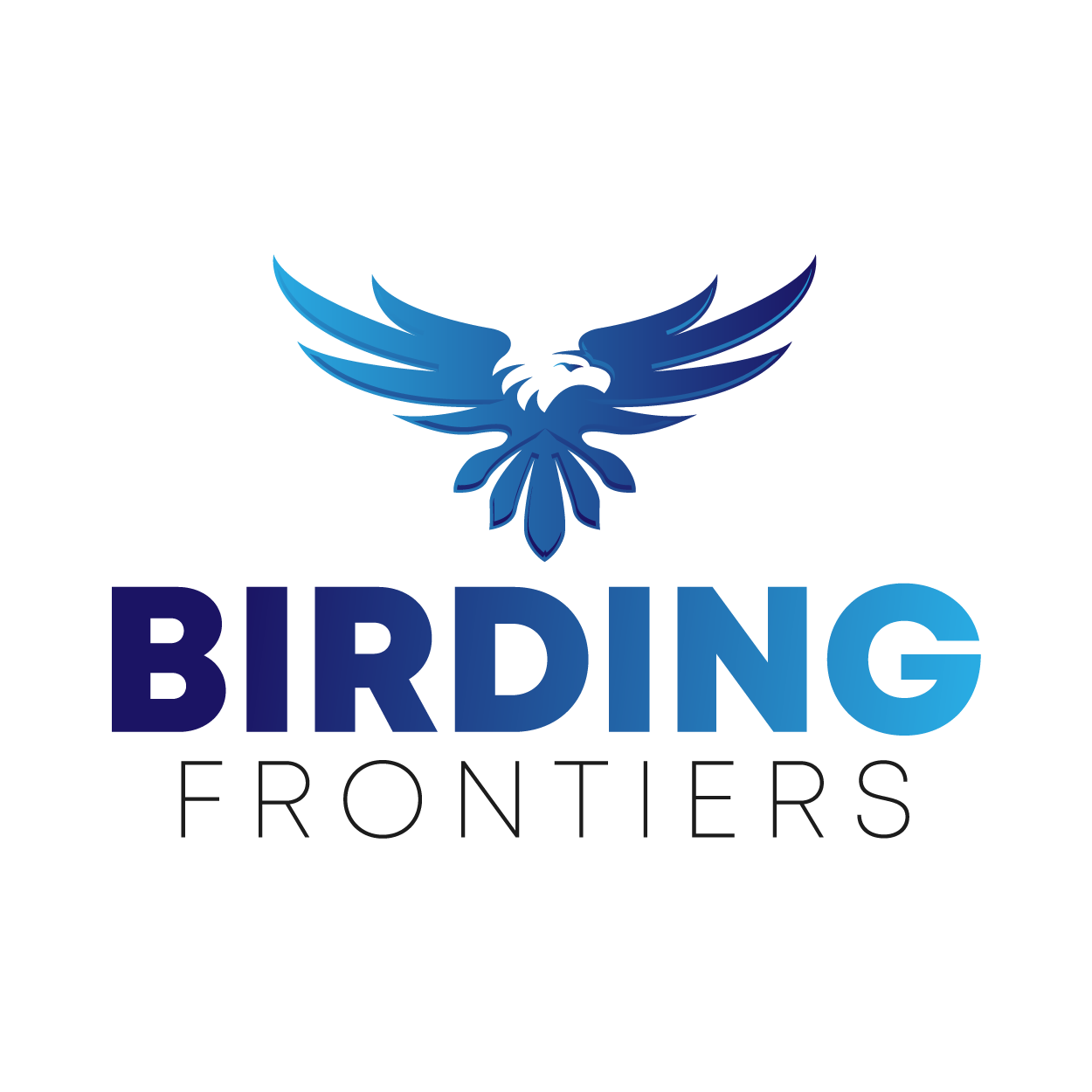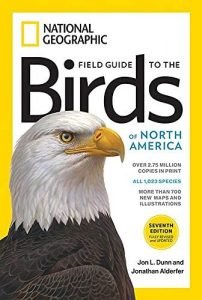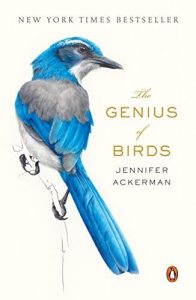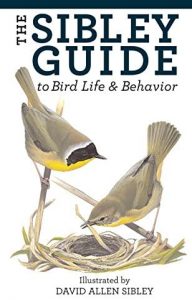Show Contents
Hide Contents
Bird watching or birding is an exciting and productive hobby to engage in. And guess what? It is entirely not expensive. It only requires you sitting out in the wild with your binoculars or telescope or your naked eye and observing the various breed of birds that fly by.
Trust me; if you thought there were a limited number of birds in existence, you’d be mind blown the minute you engage in this recreational activity.
Nevertheless, birding with the ears seems to be more effective m when it comes to detecting and identifying the different bird species that exist.
Let’s take a little walk down history lane, shall we? The first time the term “birding” was used, human beings didn’t only use it to refer to the act of watching or listening to birds. Instead, the word “birding” refers to the act of hunting down birds with a gun or firearm.
The best part about bird watching is that anyone can engage in it regardless of the age range. All you just need is your field guide for bird watching. For starters, you can get books about birds to help you with your birdwatching expenditure.
It would help you identify and recognize the kinds of birds you encounter. Now, there are bird books for just about any age. For instance, you will find books about birds for preschoolers on the market.
There are also books about birds for kids to help your kids engage and enjoy birding from a very young age.
Trying to get a book field guide to make your birdwatching hobby more interesting might not the most straightforward task. There seem to be too many books about birds for bird watchers of all ages on the markets. That’s why we have come up with this guide for you. Here are the ten best books about birds for bird watchers that you can be reading in your spare time.
Also, if you’re a genuine birder, you might want to check out these killer topics about birds and birding.
Best Gifts for Bird Lovers in 2021
Best Binoculars For Birders and Bird Watching in 2021
Birding vs Birdwatching vs Twitching
Amongst bird lovers, there seems to be a slight difference between the words “birding”, “birdwatching”, and “twitching”. In some parts of the world, the distinction between these words and their use matters a lot.
For instance, in North America, some bird lovers prefer to identify as “birders” rather than “bird watchers”. Nevertheless, the difference is noticed in terms of the intensity of their dedication to birding or birdwatching generally.
For instance, birdwatching is seen as a limited scope. In essence, a bird watcher is seen as one who only uses their eyes to watch and identify birds. Also, a bird watcher in North America is often perceived as one who is not fully invested in the act of birding.
In other words, bird watchers only watch birds within their yards and wouldn’t care intensely to travel from place to place for their love of birds. They simply bird watch for the fun of it.
On the contrary, birders are fully invested, well versed, and skilled in everything that has to do with the birding experience. A birder seems to know and do more than just visual and aural identification. They would go as far as migrating to a different country, the terrain in search or chase of other bird species (from common to rare species).
Birders are known dedicated enthusiasts who would go to any length for the sake and love of birding. They are actively involved in all the details concerning a bird’s life from their habitat usage, timing, molt, distribution, etc.
In other words, birders dive deeper into birds and their life compared to bird watchers who only stop at the surface of visual identification.
However, generally, birding and birdwatching are used interchangeably. Hence, a “bird watcher” can also be referred to as a “birder” in a more general context. But, it’s better to refer to yourself as a “bird watcher” in a broader context. The reason? Birder is an unfamiliar term to a layman.
Aside from Birding and Birdwatching, there’s a third term called “twitching”. This term is a British term used to refer to chasing or pursuing rare bird species. In North America, it has a different name. It is simply referred to as “chasing”.
Twitching aims to build a list of bird species, from common bird species to rare ones. A person who engages in twitching is called a twitcher. A twitcher travels from place to place to locate different bird species to compile a species list.
The 5 Best Books about Birds for Birdwatchers Are Reviewed Below
As a bird watcher (newbie or professional), while no buying guide can instruct you on what to look out for when shopping for a good book about birds, here are some of the top best books about birds to help you recognize any bird you come across. Our list comes highly recommended by professionals and bird lovers from all around the world. So, you’ll indeed have a blast reading any of these books.
1
National Geographic Field Guide to the Birds of North America, 7th Edition
The National Geographic Field Guide to the birds of North America is one of the best-selling bird books every bird watcher should read. Think of this book as your new best friend in birdwatching. Here’s why; the author and publishing house has made it a priority to update this book so you won’t miss out on anything.
One of the reasons you would find this book beneficial is because it was penned by JON L. DUNN, one of the best in the birdwatching world. As a leading expert in the birdwatching world, Jon is the Birding Magazine Expert.
He also once chaired the American Birding Association’s Checklist Committee. As an authority figure in the field, Jon converted years of experience and insight into this book to guide both newbies and professionals in the area.
The book is stained with hand-painted illustrations by the best nature artists to make your reading experience enjoyable. Part of the update in this 7th edition of the book is that the author added 37 new bird species to the initial 1,023 species that the book had.
It also includes 80 new maps and the revision of 350 maps already contained in the book. You’ll also find 250 new illustrations for your reading pleasure.
It also revised the taxonomy to meet the latest American Ornithological Society taxonomy. These new features make it the perfect book for bird watchers worldwide, especially those in Canada and the United States.
Key Features:
- 592 pages
- 350 revised maps
- 80 new maps added
- 250 new illustrations
- 37 newly added bird species
- Revised taxonomy that meets the latest American Ornithological Society taxonomy
Specification:
- Publisher: National Geographic
- Model: 7 edition
- Dimension: 5.7 x 1.3 x 8.3 inches
- Weight: 1.95 pounds
- Cover: Paperback
- Language: English
- Page Length: 592 pages
- Publication Date: September 12, 2017
Pros
- Clear and easy to identify images and illustrations
- Comprehensive and detailed
- Well organized, so you easily find the bird species you’re looking for
- Lightweight
- Up to date taxonomy
Cons
- The book’s binding isn’t too good.
2
The Genius of Birds
Written by Jennifer Ackerman, The Genius of Birds documents the incredible nature of the bird brain. Jennifer discovers and explores the intelligence of the bird species. Then, she proceeds to document her findings in this fantastic read. If you are a faithful bird watcher, you will marvel at her discoveries.
According to Jennifer in the book, birds seem to have a remarkable intelligence that might redefine what we understood intelligence to mean. This book entirely revolutionary. It changes your perception of bird cognition, making you more interested in the birds and studying birds.
Of course, Jennifer doesn’t present myths in the book but facts that have been confirmed by decades of research that she embarked on. She takes us on a journey that debunks the myth that birds are stupid.
With love for science, human biology, and nature, Jennifer Ackerman contributes to various publications like The New York Times, National Geographic, and Scientific American.
Key Features:
- Deploys Footnotes for compelling reading.
- Written lyrically.
- Pumped full with evidence and facts
- Follows an entertaining and straightforward style of writing
- Revolutionary in nature
Specification:
- Publisher: Penguin Books
- Model: Reprint Edition
- Dimension: 5.5 x 0.74 x 8.37 inches
- Weight: 11.2 Ounces
- Language: English
- Cover: Paperback
- Pages Length: 352
- Publication Date: April 11, 2017
Pros
- Revolutionizes how you think about birds
- Offers deep insight into the intelligence and brilliance of birds
- It is very entertaining to read
- Deploys footnote to avoid words and idea clutter in the book.
- Entirely based on facts and decades of research
Cons
- Doesn’t have illustrations
3
The Sibley Guide to Bird Life and Behavior (Sibley Guides)
Looking to dive deeper into the hobby as a birder? Then, this book is the perfect place to start for you. Labelled as the ideal “companion to the guide for birds”, this book chronicles the life and behavior of birds. In essence, you won’t directly learn anything about the identification of birds. But, you’ll surely satisfy your curiosity about the life of birds.
David Allen Sibley takes you on a journey of how birds go about their business. It explores bird activities from nesting and mating, flight patterns, laying eggs, how they feed, habitats, molts and plumages, breeding and courting, anatomy, scientific grouping, global distribution, and so on much more.
In developing this book, David deploys the use of authoritative text by experts and full-colour illustrations. The illustration makes it accessible and easy to read. The Sibley guide for birds presents a great way to be engaged in birds.
Like you, the author, David Allen Sibley, is an experienced and skilled birdwatcher. He’s been at the hobby since 1969, when he was seven years old.
Key Features:
- Fuses illustrations with authoritative texts from biologists and professional birders.
- Provides extensive information about birds and their behavior
- Organized chapters
- 608 pages
- Paperback
- Written in an accessible style
Specification:
- Publisher: Knopf
- Model: Flexibind ed. edition
- Dimension: 6.1 x 1.6 x 9.7 inches
- Weight: 2.96 pounds
- Language: English
- Page Length: 608 pages
- Cover: Paperback
- Publication Date: July 28, 2009
Pros
- The chapters are carefully organized to aid easy reading
- The illustrations are perfectly executed
- It provides extensive details about birds, their lifestyle, and their behavior.
- Great entry-level books for beginners.
Cons
- Doesn’t cover much information about bird species.
4
Peterson Field Guide to Birds of Eastern and Central North America, 6th Edition
Although written by Roger Tory Peterson, he had a little help developing and completing this Peterson field guide to Birds of Eastern and Central North America. He worked alongside a few other people.
For starters, Michael DiGeorgio contributed hand-painted the bird illustrations in the book. Paul Lehman and Larry Rosche worked on updating the map in the guide. While Rosche worked on the graphics for the map, Lehman gathered the data for the map.
As a birder, if you’re looking to exploring the terrain of Eastern and Central North America to see the lineup of birds they harbor, this Peterson bird guide is the perfect companion for you.
After close to ten years of the last edition’s publication, Peterson finally released this updated version. Trust me; it comes fully loaded.
The writers updated the organization of chapters to help readers quickly locate what they’re looking for. The maps have also been updated, and 40 new paintings have been added to the book.
Certain species were also renamed, and the team revised the accounts of more than 500 species to be brief and straight to the point.
Key Features:
- 464 pages
- Drawings and photograph illustration
- Easy identification for amateur birders
- Portable in size
- Updated by expert birders
Specification:
- Brand: Houghton Mifflin Harcourt
- Model: 6th Edition
- Dimension: 5.25 x 1 x 8 inches
- Weight: 1.6 pounds
- Cover: Paperback
- Language: English
- Page Length: 464 pages
- Date of Publication: March 14, 2010
Pros
- Portable so you can carry it around easily
- Up to date information
- Brief and straight to the point account of about 500 species
- Amateur birders would find it easy to use.
- Well-illustrated and detailed paintings and photographs
Cons
- Not exactly the best for beginners; you’ll need to know certain things (like bird names, for example) to use this guide effectively.
5
Bird Watching For Dummies
It’s okay to be fresh in the birdwatching field. After all, every expert started from somewhere. However, one thing you should do to make your birdwatching experience unforgettable is to learn the basics. A great book to help with “back to basics” learning is this book from Bill Thompson.
It takes you on a journey into the world of birds, so you have a flawless beginning. It would teach and help you identify the different kinds of birds that exist both by sound and sight. Although it’s titled “bird watching for dummies”, professional birders can also benefit from this book since it provides “back to basics” knowledge on birds.
Aside from the bird identification knowledge, it teaches you how to feed, house a bird. The book covers other topics relating to birds like nest optics, birding festivals, bird feeders, etc.
Bill Thompson III has gathered tons of experience in the birdwatching industry. He worked on many birdwatching booklets, and his birdwatching list has over 1000 bird species from around the world.
Key Features:
- A good guide on how to identify birds via sight and sound
- Helps you understand birdwatching terminologies
- Shows you how to build a bird-friendly backyard
- It covers the basics of birdwatching
- The book is written in a conversational style with humor infused in it.
Specification:
- Brand: John Wiley &Sons
- Model: 1st Edition
- Dimensions: 7.5 x 0.95 x 9.25 inches
- Weight: 1.55 pounds
- Cover Type: Paperback
- Page Length: 432 pages
- Language: English
- Publication Date: September 22, 1997.
Pros
- The perfect guide for dummies as it introduces them to the basics
- Covers a variety of topics regarding birds
- It is easy to read
- It’s educating and entertaining at the same time
Cons
- Published in 1997, it’s a bit outdated.
Buying Guide Questions
Here are some frequently asked stuff about bird books for bird watchers.
What is the best bird identification book?
There are quite a few bird identification books on the market. While every book has its strength and weaknesses, some are seemingly outstanding. However, the fact that they are outstanding still doesn’t rid them of their minute flaws. Generally, the best bird identification book is the Sibley guide to birds.
The reason is that it is accessible to birders of any skill level, the precise and detailed illustrations and how comprehensive it is. While the Sibley guide to birds is a great place to start from, you might also want to scan through libraries to discover which bird guide matches your style as a birder.
Is there an app for identifying birds?
In the 21st century, almost every book has moved from paperbacks to having digital versions. So, to answer your query, there are dozens of apps for identifying birds. The best part is, these bird-identifying apps are as comprehensive, if not more comprehensive, and easy to use as traditional handheld books.
Also, you can easily carry them around without worrying about the extra weight it adds to your bag. Some conventional, handheld bird-identifying books are heavy and not fun to move around. As a birder, it is essential to always carry your bird identification guide book along with you. While paperback books might seem like a pain in the ass, you can always use the fantastic apps developed by innovative birders.
What is the best app for identifying birds?
The best bike for identifying birds is the Merlin Bird ID by Cornell Lab. This Merlin Bird ID app uses AI to make bird identification easy. Regardless of where you are, you can identify any bird you encounter with this digital guide book companion.
By answering simple queries or simply taking a picture of a bird you see, Merlin will show you all there is to know about the bird, from the sound it makes to other ID tips. It is easy to use, and you can build a life list with this app. The app also has about 20,000 bird calls and songs to enlighten and keep you entertained.
How do bird watchers count birds?
Counting birds is undoubtedly one of the most challenging and intimidating tasks for birders. But you still need to do it for your checklist and documentation. As a result, birders have devised effective counting techniques for a flock of birds and individual birds. To count individual birds, ensure that you can see the birds and that they are recognizable. You can deploy the primary individual one-two-three counting technique if the birds are moving slowly and you can recognize them.
However, in a situation where there’s a small to medium-sized flock of birds, try the grouping technique. This technique counts birds five-by-five or ten-by-ten. But it requires practice to be perfect and fast at it. When it comes to single species of birds in larger flocks, bird watchers deploy the gird technique. The selective counting technique is perfect for large flocks of birds with mixed species.
When confronted with large flocks of birds with too many diverse species that are actively moving and flying, bird watchers use the proportions technique. The timing technique comes in handy when bird watchers are faced with a sizeable mixed-species flock of birds whose movement are too quick that they make it difficult to count. If it seems too difficult, try the photographic technique. Here, you take a photograph of the flock of birds (if possible) then count either on your computer or on a printed-out copy.
How do you identify a bird?
Bird identification is not as easy as it sounds, even for experienced bird watchers. However, there’s are techniques you can adopt that can make it easy for you to identify birds. Using these tips will help you effectively use your field guide better. You won’t need to scroll through the entire pages of the guide in search of a bird species. These techniques would help to look through your field guide strategically.
Some of these techniques include the size and overall shape of the bird. You also need to observe the bird’s behavior (does it move with a flock or in solitary, which part of the tree does it stay in? does it feed in the water or on the ground, does it prance in the open or in the bushes?) look out for its habitat and range, what’s it fields mark and color? Once you can answer these FAQs upon sighting a bird, you’ll be able to use your bird guide to identify the bird species effectively.
What is the proper name for a bird watcher
A birdwatcher is someone who watches and identifies birds through sight and sounds. More often than not, birdwatchers are called birders or twitchers. However, the term ‘birder’ or ‘twitcher’ seems to differ in some way from the term ‘birdwatcher’. Birders do more than identify bird species through sight and sounds. Birders are more intensely engaged in the birding hobby.
They travel out of their space to other parts of the world to see and document different bird species. They do not just stumble on bird species by accident; they actively sort out different bird species and for the fun of it. However, twitchers engage in the game of twitching, where they travel to see various bird species to compile a comprehensive list of bird species.
So, if you are passive in the bird hobby (that is, you follow your friends to watch birds), the proper name for you is ‘bird watcher’ because you are only interested in watching and listening to birds. However, if you are more deeply invested in the hobby, you’re a ‘birder’. If you chase birds for the sake of compiling your life list, you’re a twitcher.
How do I find the name of a bird in a picture?
The easiest way to find the name of a bird in a picture is to use the Merlin Bird Photo ID website. It simplifies your bird identification experience for you. All you need to do is add the photograph of the bird you want to find, and it would help identify the bird from its name down to other features of the bird. It was created by Cornell and the Visipedia project to simplify the bird identification task. You can identify up to 400 birds on the site that are resident in Canada and the United States. In terms of accuracy, the site is 90% accurate in identifying the picture of the bird you upload on it. Nevertheless, the creators of this website are still working on ensuring that the site delivers up to 100% accuracy.
How do you play with a pet bird?
Birds are intelligent and social creatures. They stay happy when they bond with you and your family. There are quite a few ideas on playing with your pets so they would feel loved and cared for. You can play fetch and retrieve with some birds the same way you do with your dog, for starters. You can also play games like peek-a-boo, hide-and-seek, climb the rope (especially with parrots). Don’t forget to incorporate treats and deploy encouraging words while playing with your bird.
What is the eBird life list?
Your eBird life list documents, accurately, all of the experiences you’ve had in your life as a birder or birdwatcher. With the eBird platform created in a way that makes it easy for you to input your bird sightings and the location, date and time you sighted the bird, you can have a very up to date ebird life list.
The best part is that if you are terrible at counting birds, you do not need to record the number of birds you encountered in your eBird life list. You could just use an alphabet in place of the estimated number of birds you encountered and documented. Also, if you have a long list of bird species that you’ve seen in your lifetime, you can gradually upload it on the eBird life list. You do not need to upload it all at once.
What is the best magnification for bird watching?
Generally speaking, choosing a random binocular for bird watching might frustrate you in the long run. Higher and lower magnification in binoculars has its benefits and downsides. But the best magnification to use depends on the location you’re viewing a bird from. Nevertheless, most bird watchers prefer 8-power binoculars to 10-power binoculars. In essence, as a bird watcher, you are better off with an 8x or 7x magnification. Some birdwatchers claim that it sees more details than the 10x.
Conclusion
Bird books for birdwatchers are designed to help both professionals and amateur bird watchers identify the different bird species that come their way. If you are a beginner, a great place to start is to get a good bird book that introduces you to the world of birds and the different species that exists. With our fantastic list of books, you will be well on your way to falling deeply in love with birds and other species.






